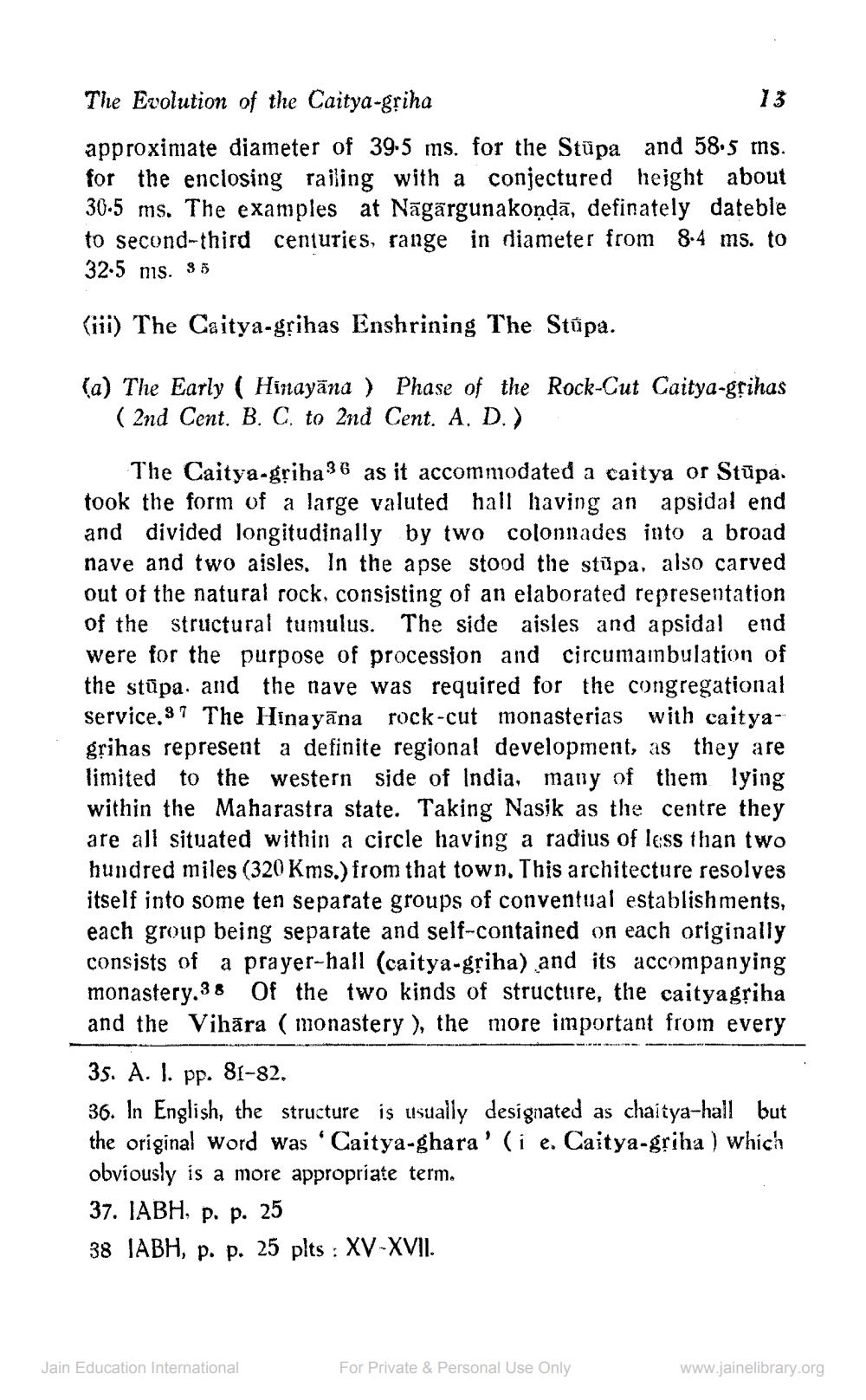________________
13
The Evolution of the Caitya-griha approximate diameter of 39.5 ms. for the Stūpa and 58.5 ms. for the enclosing railing with a conjectured height about 30.5 ms. The examples at Nāgārgunakoņdā, definately dateble to second-third centuries, range in diameter from 8.4 ms. to 32.5 ms. 35
(iii) The Caitya-grihas Enshrining The Stúpa.
(a) The Early ( Hinayāna ) Phase of the Rock-Cut Caitya-grihas
( 2nd Cent. B. C. to 2nd Cent. A. D.)
The Caitya-gọiha36 as it accommodated a caitya or Stūpa. took the form of a large valuted hall having an apsidal end and divided longitudinally by two colonnades into a broad nave and two aisles. In the apse stood the stūpa, also carved out of the natural rock, consisting of an elaborated representation of the structural tumulus. The side aisles and apsidal end were for the purpose of procession and circumambulation of the stūpa. and the wave was required for the congregational service.37 The Hinayāna rock-cut monasterias with caityagrihas represent a definite regional development, as they are limited to the western side of India, many of them lying within the Maharastra state. Taking Nasik as the centre they are all situated within a circle having a radius of less than two hundred miles (320 Kms.) from that town. This architecture resolves itself into some ten separate groups of conventual establishments, each group being separate and self-contained on each originally consists of a prayer-hall (caitya-griha) and its accompanying monastery.38 Of the two kinds of structure, the caityagriha and the Vihāra (monastery ), the more important from every
35. A. I. pp. 81-82. 36. In English, the structure is usually designated as chaitya-hall but the original word was 'Caitya-ghara' (i e. Caitya-griha ) which obviously is a more appropriate term. 37. IABH, p. p. 25 38 JABH, P. p. 25 plts : XV-XVII.
Jain Education International
For Private & Personal Use Only
www.jainelibrary.org




